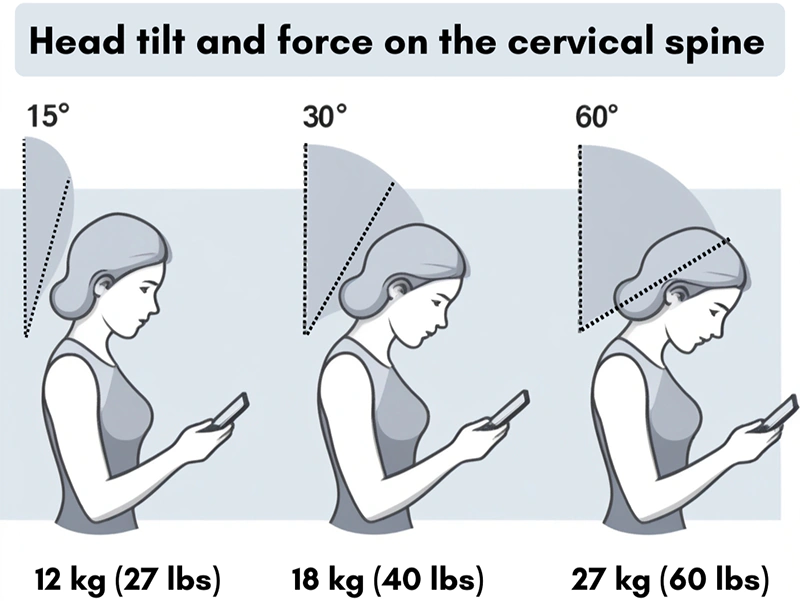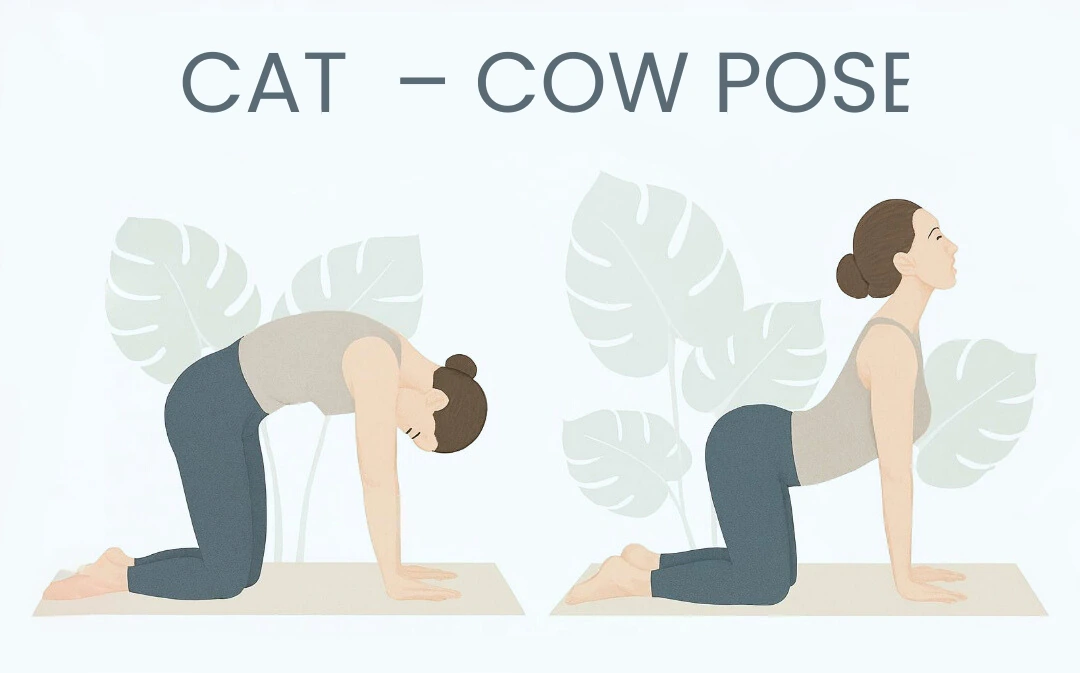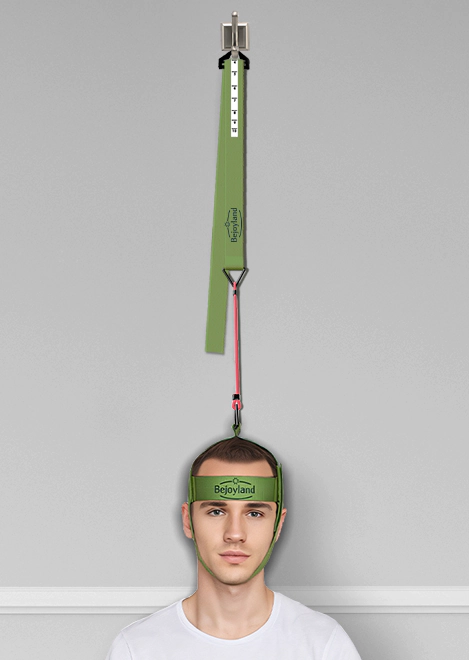In 2024, nearly half of Americans spent 5–6 hours daily on their smartphones. In fact, this amounts to 2.5–3 months per year solely on device usage1. Growing reliance on digital tech has given rise to a modern health issue: tech neck. Also called text neck syndrome, nerd neck, or forward head posture, it results from the strain placed on the cervical spine due to prolonged forward head tilt while using devices.
This article explores the causes, symptoms, risks, and proven methods to prevent and treat tech neck. It also provides practical solutions to maintain a healthy neck alignment.
What Is Tech Neck?
Tech neck is a posture related condition defined by the strain caused by looking down at devices for extended periods. The average head weighs around 4.5–5.5 kilograms (10–12 pounds) in a neutral position. However, as the head tilts forward, the force on the cervical spine increases greatly2:
- At a 15-degree tilt, the head exerts about 12 kilograms (27 pounds) of force.
- With a 30-degree tilt, the force increases to 18 kilograms (40 pounds).
- When a 60-degrees tilt occurs, the weight on the spine can reach a shocking 27 kilograms (60 pounds).
This excessive strain not only places undue pressure on the cervical vertebrae but also affects surrounding muscles and tissues. This leads to pain, stiffness, and long-term postural problems. Therefore, addressing tech neck early is crucial to avoid long-term issues


Tech Neck Symptoms
Tech neck, or text neck, can present a range of symptoms, from mild discomfort to more serious health issues. Common symptoms include:
- Persistent neck pain that worsens after prolonged screen time3.
- Stiffness and discomfort in the neck, upper back, and shoulders3, making it difficult to turn or tilt the head.
- Headaches caused by tension in the neck muscles.
- Forward head posture and rounded shoulders are often observed.
- Reduced range of motion in the neck.
- Tingling, numbness, or weakness in the arms in severe cases, resulting from nerve compression.
The Link Between Text Neck and Neck Pain

While some research supports a strong connection between text neck and neck pain, the exact link needs to be further explored:
- 1. Physical Strain: A study found that prolonged forward head posture greatly increases the mechanical load on the cervical spine. This contributes to pain and issues with muscles and skeletons2. The chance of neck pain is six times higher in office workers who overuse smartphones, one study said4.
- 2. Other Factors: Another study reports that text neck often leads to symptoms like stiffness, reduced mobility, and pain. However, pre-existing conditions, physical activity levels, and device usage habits, can affect how severe the symptoms are5.
- 3. Conflicting findings: At the same time, some studies have not found a direct link between text neck and neck pain6.
More studies are needed to clearly assert direct causation.
Is Text Neck a Medical Diagnosis?
Text neck is widely recognized as a common postural problem, though it isn’t an official medical diagnosis. Instead, it is often used to describe recurring stress injuries caused by forward head posture. However, there is no commonly accepted diagnostic framework.
Healthcare can providers assess text neck by looking at5:
- Patient history and reported symptoms, such as neck pain, stiffness, and headaches.
- Posture, especially the forward head tilt, and range of motion.
- Whether symptoms are linked to prolonged device use (4 h or more per day) with a neck flexion of around 15 degrees or greater.
What Causes Forward Head Posture?
Text neck is mostly caused by prolonged forward head tilt while using devices such as smartphones, tablets, and laptops. Other leading factors include5:
- Lack of physical activity.
- Frequency and duration of time spent in an improper position while using portable devices.
- Holding devices below eye level, leading to a slouched posture.
- Extended screen time without breaks.
- Lack of awareness about maintaining proper posture during daily tasks.

Who Is at Risk for Text Neck?
Certain groups are more likely to develop text neck because of their habits and routines:
- Children and Teenagers: Younger people are especially vulnerable because of their high screen time and growing bones and muscles7. Early habits of poor posture during device use can lead to lasting postural issues.
- Office Workers and Professionals4: Adults who spend long hours working at desks and staring at screens face a higher risk. This is often caused by improper workspace setup and not taking enough movement breaks.
- Gamers8 and Streamers: Extended gaming or binge-watching sessions often involve a forward head tilt, increasing strain on the neck and shoulders.
Tech Neck Exercises
Certain exercises can relieve pain and stiffness caused by tech neck while also promoting healthy posture. For instance, here are some effective options:
- 1. Chin Tucks. Sit upright and gently pull your chin toward your chest, lengthening the back of your neck. Hold for 5–10 seconds and repeat 10 times.
- 2. Side PNF Neck Stretch. To start, sit or stand in a relaxed position. Drop your left ear toward your left shoulder. Place your left hand on the right side of your head. Then, gently press your head against your hand for 4–6 seconds, creating resistance without moving your head. Next, relax and allow your head to sink deeper into the stretch for 8–10 seconds. Perform 3–5 repetitions on each side.
- 3. Thoracic Extensions. Sit with your back against a chair, clasp your hands behind your head, and gently arch your upper back. Repeat 8–10 times to improve spinal flexibility.
- 4. Shoulder Blade Squeezes. Squeeze your shoulder blades together, hold for 5 seconds, and release. Perform 10 repetitions.
- 5. Cat-Cow Stretch. Start on your hands and knees in a tabletop position. Arch your back, dropping your belly towards the floor (Cow Pose). Then, round your back, tucking your chin to your chest (Cat Pose). Alternate between the two poses for 10 repetitions. This increases spinal flexibility and reduces stiffness.

How to Fix Tech Neck
There are various ways to relieve tech neck symptoms and prevent further progression. For instance, beyond prevention tips, consider these treatment options5: physical therapy, habit changes and mindfulness, kinesiology taping, manual therapy, and neck training with targeted tools.
Physical Therapy – upper back and neck training
-
1. Postural Correction Exercises:
These exercises aim to realign the spine and improve posture by strengthening the muscles that support the neck and upper back. As a result, they help reduce strain caused by forward head posture. -
2. Stabilization Exercises:
Focused on enhancing the stability of the cervical spine, these exercises target deep neck flexors and other stabilizing muscles. Ultimately, this helps prevent excessive movement and reduce pain. -
3. Strengthening and Stretching Exercises:
These exercises aim to strengthen weakened muscles and stretch tight ones. In turn, this improves flexibility and reduces stiffness in the neck and shoulders. -
4. PNF Stretching:
The most advanced stretching technique combines passive stretching and isometric contractions to improve strength, flexibility and muscle function.
Habit Changes and Mindfulness
Building an awareness of posture, taking frequent breaks, and adopting proper habits can help prevent text neck. Over time, these practices work to reduce its impact and improve overall well-being. Various break reminder tools can help you along the way. These tools provide custom reminders to prompt users to pause, stretch, and step away from their devices. They help minimize the physical strain caused by prolonged screen use.
Kinesiology Taping (KT)
KT involves applying elastic healing tape to the neck and shoulders in specific patterns. The tape works by improving blood and lymph flow and relieving pressure on pain receptors just beneath the skin. It also activates sensory nerves to ease discomfort through the gate control theory. KT supports alignment, reduces pain, and balances muscle tone. It provides gentle support to strained muscles, such as neck extensors, and helps maintain proper alignment. While KT is not a standalone treatment, it enhances the results of other therapies. Pain relief is often felt within three days, making it a valuable supportive method9.
Manual Therapy
This includes techniques such as massage, joint mobilization, and manipulation to reduce pain and improve range of motion. These methods also address imbalances in muscles and the skeleton.
Each method offers unique benefits and can be tailored to personal needs for effective healing. Although the impact of these methods on text neck requires further study. The best outcomes seem to come from combining various approaches5.
Bejoyland Neck Trainer: An Effective Tool for Text Neck
In addition, tools like neck trainers can support faster recovery from tech neck. The Bejoyland NECKY neck trainer and stretcher effectively strengthens neck muscles and improves alignment. It also enhances flexibility and range of motion. With adjustable resistance from 1 to 10 lbs, it supports various neck strengthening exercises and neck stretches. It enables advanced PNF techniques as well. Its design also provides gentle neck decompression, promoting proper alignment and making neck training even more effective. You can learn more about it here.

Is Forward Head Posture Correctable?
Forward head posture is correctable through measures like postural correction exercises, strengthening and stretching routines. Other helpful methods include ergonomic and habits changes, and mindfulness practices. Thus, early and consistent effort is key to achieving long-term improvement5.
How Long Does It Take to Correct Forward Head Posture?
The time it takes to correct forward head posture varies depending on how severe it is. It also relies on the persons commitment to corrective measures. With consistent effort, including targeted exercises, ergonomic adjustments, and habit changes, first improvements can be seen within a few weeks. However, achieving complete correction may take several months, especially for long-standing cases. Thus, taking action early and regular practice are key to faster and more effective results.
How to Prevent Tech Neck
Prevention is key to avoiding the long-term effects of text neck. Here are some tips to protect your neck and spine8:
- Avoid excessive total usage of mobile devices.
- Maintain Proper Posture: Keep screens at eye level to reduce forward head tilt.
- Avoid prolonged static postures and/or recurrent movements.
- Take Frequent Breaks: Apply the “20-20-20 rule” to relax neck muscles and reset posture. Every 20 minutes, take a 20-second break to look at something 20 feet away.
- Use Ergonomic Tools: Use adjustable chairs, desks, and smartphone holders to ensure better alignment.
- Avoid holding larger or heavy devices in one hand for long durations.
Conclusion
Tech neck is a growing concern in the digital age, with far-reaching effects for health and well-being. Modern habits are the primary causes of tech neck. You can address its symptoms and long-term effects through proper awareness, physical activity, habit changes, and mindfulness. Still, text neck remains an under-researched and evolving field of study, especially regarding its impact on children and teenagers. Thus, by knowing its potential risks and taking proactive steps, you can maintain healthy posture. These actions will also help you protect yourself from cervical strain.
FAQ About Tech Neck
Can tech neck be corrected?
Yes, tech neck can be corrected through targeted methods. Practice postural correction exercises, add stretching and strengthening routines to your day, make ergonomic adjustments, and embrace lifestyle changes. Yet, consistent effort and awareness are key to reversing its effects.
Can a physical therapist fix forward head posture?
A physical therapist can help fix forward head posture by designing tailored exercise programs. These programs strengthen weak muscles, stretch tight ones, and improve spinal alignment. They also provide guidance on ergonomic adjustments and posture awareness.
How long does it take to correct forward head posture?
The time it takes to correct forward head posture depends on how severe the condition is. It also varies based on how consistent you are in following corrective measures. With regular exercises and ergonomic adjustments, first improvements can be seen within weeks. Yet, complete correction may take several months.
Can tech neck go away on its own?
Tech neck typically does not go away on its own. At the same time, without active treatment, symptoms may persist or worsen over time. Therefore, addressing posture, taking breaks, and performing targeted exercises are essential for recovery.
What are 4 symptoms of text neck?
Four common symptoms of text neck include:
- Persistent neck pain or stiffness.
- Headaches caused by neck tension.
- Rounded shoulders and forward head posture.
- Reduced range of motion in the neck.
What is the fastest way to get rid of a tech neck?
The fastest way to ease tech neck involves a mix of methods. Advanced PNF stretching technique improves muscle strength and neck mobility. Kinesiology taping provides quick relief and supports better posture5. Further, ergonomic adjustments, such as raising screens to eye level and ensuring proper workstation setup, can prevent further worsening. Summing up, this complete approach addresses both the symptoms and root causes of tech neck while promoting faster recovery.
Can you completely fix forward head posture?
Yes, forward head posture can be fully fixed with consistent effort. That is to say, combining strengthening exercises, stretching routines, ergonomic adjustments, and lifestyle changes can restore proper alignment and prevent recurrence.
What muscles are weak in forward head posture?
Forward head posture weakens the deep cervical flexors and erector spinae in the lower cervical and upper thoracic regions. It also affects shoulder blade retractors like the rhomboids and middle trapezius. Therefore, strengthening these muscles is crucial for correction.
References
- Naveen Kumar. Smartphone Usage Statistics 2025 (By Age & Country). December 31, 2024.
- Hansraj K.K. Assessment of stresses in the cervical spine caused by posture and position of the head. Surgical Technology International. 2014; 25:277–279.
- Ella Thorburn, Rodney Pope, Shaoyu Wang. Musculoskeletal symptoms among adult smartphone and tablet device users: a retrospective study. Arch Physiother. 2021 Jan 9;11:1.
- Nazi Derakhshanrad, Mir Saeed Yekaninejad, Ramin Mehrdad, Hooshang Saberi. Neck pain associated with smartphone overuse: cross-sectional report of a cohort study among office workers. Eur Spine J. 2021 Feb;30(2):461-467.
- Joanna Piruta, Wojciech Kułak. Physiotherapy in Text Neck Syndrome: A Scoping Review of Current Evidence and Future Directions. Acta Med Acad. 2022;51(2):123–127.
- Correia IMT, Ferreira AS, Fernandez J, Reis FJJ, Nogueira LAC, Meziat-Filho N. Association Between Text Neck and Neck Pain in Adults. Spine. 2021;46(9):571-78.
- David D, Giannini C, Chiarelli F, Mohn A. Text Neck Syndrome in Children and Adolescents. Int J Environ Res Public Health. 2021;18(4):1565.
- Chuck Tholl, Peter Bickmann, Konstantin Wechsler, Ingo Froböse, Christopher Grieben. Musculoskeletal disorders in video gamers – a systematic review. BMC Musculoskelet Disord. 2022 Jul 16;23:678.
- Kothare H., Patil C., Muley R. Immediate effects of kinesio taping on upper trapezius muscle on subjects having text neck. Int. J. Physiol. Nutr. Phys. Educ. 2019;4:131–133.
- Siao Hui Toh, Pieter Coenen, Erin K Howie, Leon M Straker. The associations of mobile touch screen device use with musculoskeletal symptoms and exposures: A systematic review. PLoS One. 2017 Aug 7;12(8):e0181220.
